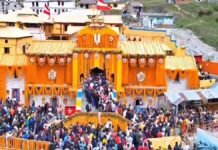
Makar Sankranti is a holy festival that marks the transition of the sun into the zodiac sign of Capricorn (Makara). It is celebrated across India on 15 January 2024, with different names and customs. One of the common traditions associated with Makar Sankranti is flying kites, which have both mythological and scientific significance.
The mythological story behind kite flying
According to a popular legend, Lord Shri Ram was the first one to fly a kite on the day of Makar Sankranti. He made a kite from the bark of a tree and flew it with a thread made from his wife Sita’s hair. His kite soared high and reached heaven (Indralok), where it was admired by all the gods and goddesses. They praised Lord Ram for his skill and devotion. Since then, flying kites on Makar Sankranti became a tradition to honor Lord Ram and express happiness.
The scientific benefits of kite flying
From a scientific point of view, flying kites on Makar Sankranti has many health benefits. On this day, the sun’s rays are considered to be beneficial for the body, as they help in curing various diseases and infections. By flying kites, people expose themselves to more sunlight, which boosts their vitamin D levels and strengthens their immunity. Moreover, flying kites also improves the eyesight, blood circulation, and mental alertness of the people.

The cultural aspects of kite flying
Flying kites on Makar Sankranti is also a way of celebrating the cultural diversity and unity of India. Different regions have different names and styles of kites, such as Patang, Gudiparan, Tukkal, Chhajja, etc. People also use different colors and designs to decorate their kites, which reflect their creativity and personality. Flying kites is a fun and competitive activity, where people try to cut each other’s kites and shout slogans like “Kai Po Che” and “Woh Kata”. Flying kites are also a symbol of freedom and joy, which is why people also fly kites on Independence Day.












































